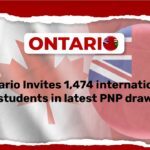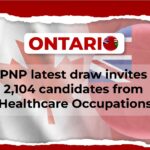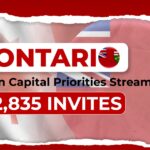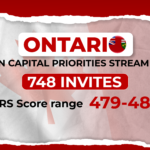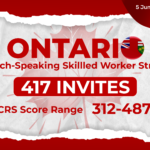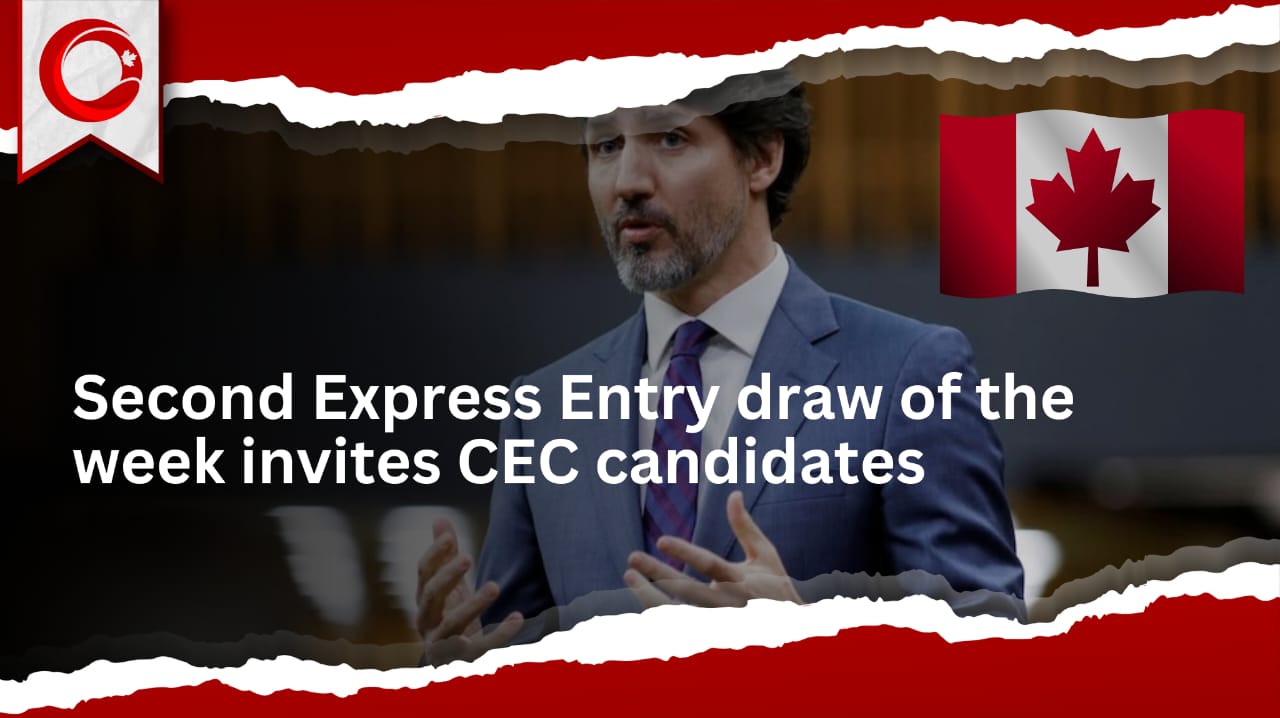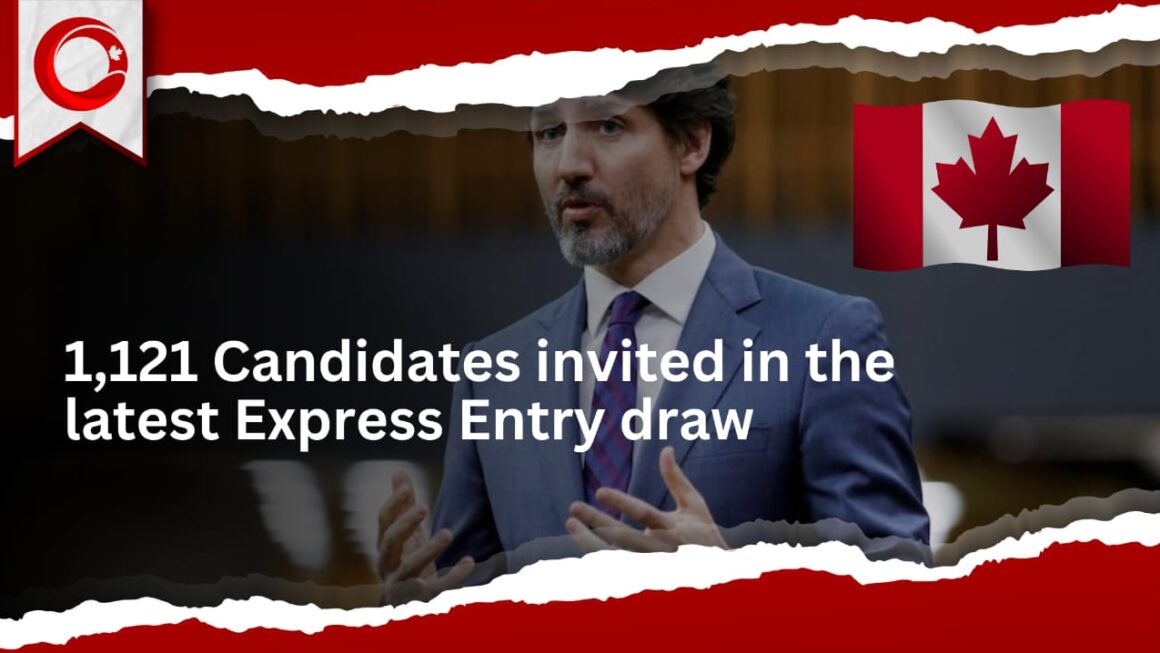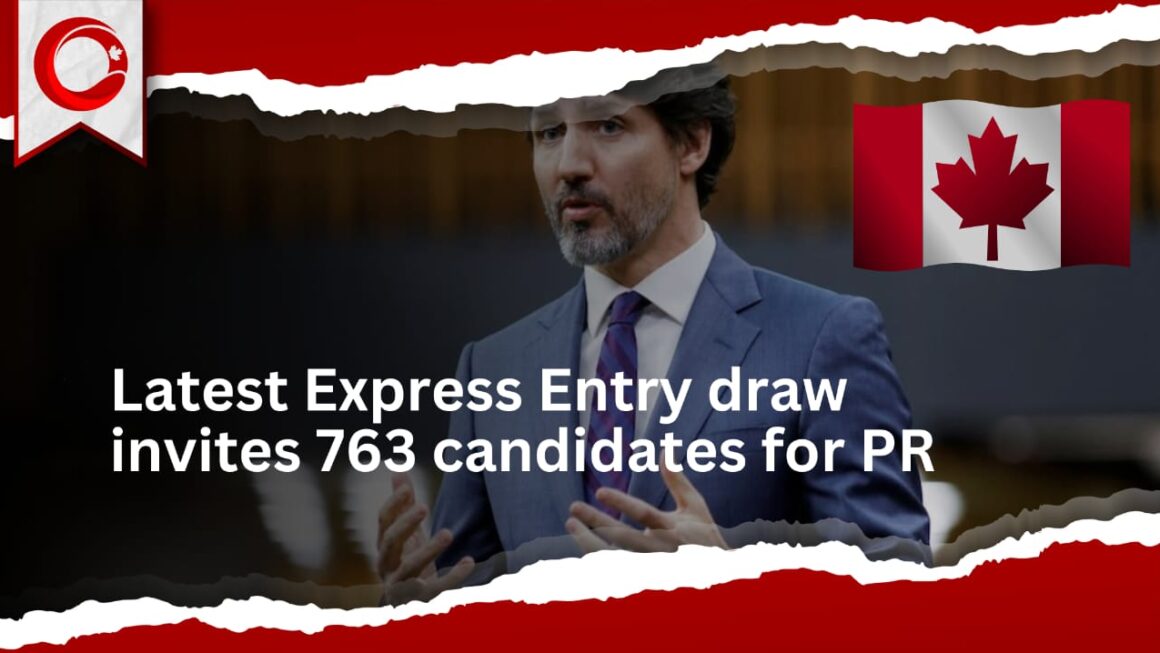Table of Contents
- Second Express Entry draw
- Understanding the Express Entry System
- The Importance of Canadian Experience Class (CEC)
- Details of the Second Express Entry Draw of the Week
- Why a Second Draw?
- Implications for CEC Candidates
- How to Improve Your Chances in Future Draws
- Closing Thoughts
Second Express Entry draw
Canada’s immigration system continues to attract skilled workers from around the world, and the Second Express Entry program is one of the primary ways for those looking to secure permanent residency. In a surprising move, the Canadian government held a second Express Entry draw in the same week, specifically targeting Canadian Experience Class (CEC) candidates. This draw not only reflects the government’s ongoing commitment to welcoming skilled workers but also highlights the unique opportunities available to those with Canadian work experience.
Understanding the Second Express Entry System
The Second Express Entry system is an online immigration application process designed to manage applications for three federal economic immigration programs:
- Federal Skilled Worker Program (FSWP)
- Federal Skilled Trades Program (FSTP)
- Canadian Experience Class (CEC)
Candidates who meet the eligibility requirements for any of these programs can create an Second Express Entry profile and be placed in a pool of candidates. The system uses a Comprehensive Ranking System (CRS) to score candidates based on factors such as age, education, work experience, language proficiency, and other criteria. Regular draws are held by Immigration, Refugees and Citizenship Canada (IRCC), and those with the highest CRS scores are invited to apply for permanent residency.
The Importance of Canadian Experience Class (CEC)
The Canadian Experience Class (CEC) is a key component of the Second Express Entry system. It is specifically designed for individuals who have gained skilled work experience in Canada. This program is ideal for temporary foreign workers and international graduates who have the experience needed to transition to permanent residency.
The CEC is popular because it offers several advantages:
- No Proof of Settlement Funds: Unlike other programs, CEC candidates are not required to demonstrate proof of settlement funds.
- No Job Offer Required: Candidates do not need a job offer to be eligible for the CEC.
- Fast Processing Times: Applications under the CEC are typically processed faster compared to other immigration programs.
The Canadian government recognizes the value of individuals who have already integrated into the Canadian workforce and society, which is why the CEC is a significant route for those looking to settle permanently in Canada.
Details of the Second Express Entry Draw of the Week
In an unexpected turn, the IRCC conducted a second Express Entry draw within the same week, specifically inviting candidates from the CEC category. This draw is noteworthy for several reasons:
- Targeted Draw: Unlike the usual all-program draws that include candidates from FSWP, FSTP, and CEC, this draw was exclusively for CEC candidates.
- CRS Score Requirement: The minimum CRS score required for this draw was [insert score], reflecting the competitive nature of the pool.
- Number of Invitations Issued: A total of Invitations to Apply (ITAs) were issued, allowing successful candidates to move forward with their application for permanent residency.
This second draw demonstrates the government’s focus on addressing the needs of the labor market by prioritizing candidates who have already proven their ability to work and contribute to the Canadian economy.
Why a Second Draw?
The decision to hold a second Express Entry draw within the same week, targeting CEC candidates, may be influenced by several factors:
- Labor Market Demands: Canada’s labor market has ongoing needs, particularly in industries that require skilled workers. By holding a targeted draw, the government can address specific shortages more effectively.
- Post-Pandemic Recovery: As Canada continues its recovery from the COVID-19 pandemic, there is a need to ensure that the workforce is adequately supported. CEC candidates, who already have Canadian work experience, are well-positioned to contribute to this recovery.
- Backlog Management: The IRCC may also be using this strategy to manage the backlog of applications and ensure that candidates who are ready to settle permanently are processed promptly.
- Retention of Skilled Workers: By inviting more CEC candidates, the government is encouraging skilled workers who are already in Canada to stay and contribute to the economy long-term. This helps retain talent and supports the country’s economic growth.
Implications for CEC Candidates
For CEC candidates, this second draw of the week is an exciting opportunity. It underscores the importance of maintaining an up-to-date and competitive Second Express Entry profile. Candidates who received an ITA in this draw will now need to take the next steps to secure their permanent residency.
Steps After Receiving an ITA:
- Complete Your Application: Candidates who receive an ITA have 60 days to complete and submit their application for permanent residency. This includes providing all required documentation, such as proof of work experience, education credentials, and language test results.
- Medical Examination and Police Clearance: As part of the application process, candidates must undergo a medical examination and obtain police clearance certificates from any country where they have lived for six months or more since the age of 18.
- Submit Biometrics: If not already done, candidates will need to submit their biometrics as part of the application process.
- Await Decision: Once the application is submitted, candidates must wait for the IRCC to process their application. The processing time for Second Express Entry applications is typically six months or less.
- Prepare for Landing: If the application is approved, candidates will receive a Confirmation of Permanent Residence (COPR) and can then prepare to make Canada their permanent home.
How to Improve Your Chances in Future Draws
For those who did not receive an ITA in this draw, or are planning to enter the Second Express Entry pool, there are several strategies to improve your CRS score and increase your chances in future draws:
- Improve Language Scores: One of the most effective ways to boost your CRS score is by improving your language test results. Consider retaking the IELTS or CELPIP (for English) or TEF (for French) to achieve higher scores.
- Gain More Work Experience: Additional skilled work experience, particularly in Canada, can enhance your CRS score and make you more competitive in the pool.
- Education Credentials: If you have completed additional education, make sure it is evaluated by an Educational Credential Assessment (ECA) to potentially increase your CRS score.
- Provincial Nominee Program (PNP): Consider applying for a provincial nomination through one of Canada’s PNPs. A nomination can add 600 points to your CRS score, virtually guaranteeing an ITA in the next draw.
- Secure a Job Offer: While not required for the CEC, a valid job offer can add valuable points to your CRS score and improve your chances of receiving an ITA.
Closing Thoughts
The second Express Entry draw of the week, targeting CEC candidates, is a clear indication of Canada’s commitment to retaining skilled workers who have already proven their ability to contribute to the economy. For those who received an ITA, this is a significant milestone on the path to permanent residency. For others, it serves as a reminder of the importance of staying competitive in the Second Express Entry pool.
As Canada continues to navigate its post-pandemic recovery, we can expect more targeted draws and opportunities for skilled workers to secure their future in Canada. Whether you’re a current CEC candidate or planning to enter the Second Express Entry system, staying informed and proactive is key to achieving your immigration goals.
By following the strategies outlined above and keeping an eye on future draw trends, you can improve your chances of receiving an ITA and making Canada your permanent home.




















































